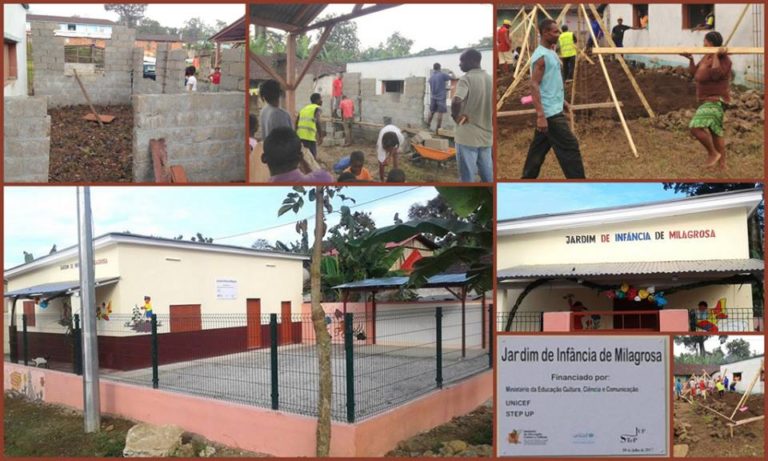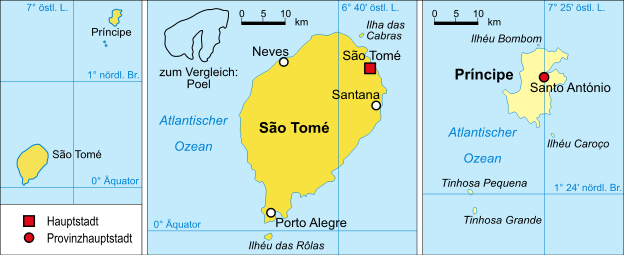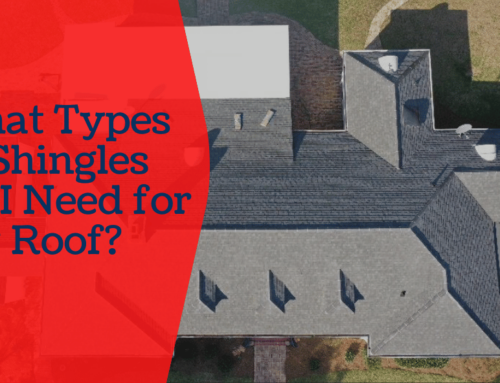“Thanks, and a hat tip, to Camden Roofing & Construction for their generous sponsorship of our education and assistance efforts in São Tomé & Principe. Life changers. Good business folks, too.” (TexasInAfrica.blogspot.com)
The African Republic of São Tomé & Principe consists of a pair of islands located along the Equator in the Gulf of Guinea, plus multiple rocky inlets. About one third of the population lives in the capital city of São Tomé on the island with the same name, or in the surrounding areas, with five percent of the people living on the island of Principe. People often live in homes made from wooden planks, raised above the ground; others live in concrete structures or in barrack-like structures located on plantations.
Approximately 43 percent of the population is under the age of 15, which means there is a crucial need for schools. Most students attend primary school, which is required for six years; just a few short years ago, that requirement was raised from four to six. Secondary education options are not as broadly available, so fewer youth can take advantage of high school opportunities.
There is also a clear need for students to get an early start on their education in São Tomé & Principe, which is why Camden Roofing & Construction decided to help make that a reality.

(All photos from São Tomé are courtesy of Brian Dickerson)
To help you understand more about the country and its people, here’s more about the history of this lesser-known African republic.
History of São Tomé
This country was founded in 1493, the same year that Christopher Columbus returned to Spain after his first visit to what became known as North America. The founder was a man named Alvaro Caminha, a Portuguese man who was searching for land to grow sugar. Portuguese navigators had originally come to the island around 1470, finding it uninhabited by people.

(Creative Commons Image: Pixabay)
Because São Tomé is located right along the equator, and because it had enough precipitation, Caminha decided to use this island to commercially grow sugar. The island was named after Saint Thomas, and Caminha found laborers to work the plantations (slave labor, unfortunately) and also secured the toil of convicts to help with the backbreaking work.
Briefly, São Tomé produced the world’s largest amount of sugar, but Brazil’s product was superior, and the islanders couldn’t compete for long. Plus, slaves would escape from the plantations, disrupting the forced labor system. On July 9, 1595, many of the slaves – led by Rei Amador, now considered a national hero by many – marched into the capital to protest their enslavement. This became known as the Revolta Angolar, and this bold action earned them about a year of freedom before they were taken back into slavery. Pirates were also a threat, with the Dutch taking over the island in 1599, but only for a matter of days. In 1641, the Dutch took firmer control of São Tomé for a few years before it returned to Portuguese rule.
With the sugar economy in disarray, new economic plans were needed. By the 19th century, coffee and cocoa production accounted for a significant portion of the island’s economy, again often using slave labor. When slavery was abolished in 1875, contract workers were encouraged to come to the island from Angola, Cape Verde and Mozambique. The poor quality of their living and working conditions, though, didn’t create any marked improvement over those who had been enslaved.
The island remained a Portuguese colony until 1975, often enduring periods of violence and unrest, and then it became its own nation. Free elections began in 1991, although military coups have taken place more than once since that time.
Modern-Day Island

(Domenico-de-ga at the German language Wikipedia [GFDL (http://www.gnu.org/copyleft/fdl.html) or CC-BY-SA-3.0 (http://creativecommons.org/licenses/by-sa/3.0/)], via Wikimedia Commons)
“Beaches are magnificent, unspoiled, and undiscovered yet by the tourist world . . . An impressive culture, gracious people; all of them it seems.”
Despite all the challenges that people from this country have faced over the centuries, they are hard-working and dedicated to improving their lives. Once a week, a ferry comes to the island from Cape Verde. Plus, there is the São Tomé International Airport with direct flights to Portugal, as well as Angola, Gabon and Ghana, plus limited domestic flights between the two main islands.
One of the three most prominent buildings is the Presidential Palace, built some time in the 19th century and renovated in 1954. This rose-pink structure is surrounded by pink concrete columns and a high iron fence, and it serves as the residence of the country’s president.
The second building of note is the 16th-century cathedral; the third is the São Tomé National Museum, housed in a 1575 fort. This museum contains colonial artifacts, as well as religious ones. And, speaking of construction . . . let’s return to Camden’s contributions.
Camden Contributes to Educational Needs

When residents of the country needed a preschool and kindergarten, they were more than willing to pull together to provide the labor. But, they needed construction materials and funding support – and that’s where Camden stepped in. Assistance was also provided by UNICEF and the Department of Education. It was determined by organizers that the structure would be built on a now-overgrown former plantation and it would also serve as a community center.
Brian Dickerson reported in October 2017 that classes were getting ready to start, with parents being quite “happy to see their children able to attend school in early age.” In January 2018, he provided an update that shared how 40 children were now in the preschool. When the refrigerator and kitchen supplies arrived that month, UNICEF and STeP UP attended – and this celebratory event was even aired on national television.
Final Note

(Photo by Tim Marshall on Unsplash)
The preschool has made a huge difference in the lives of people and in the community, overall. Camden has also supported additional family assistance projects for children in this community over the years, making a meaningful positive contribution to the lives of individuals as well to community life.






Leave A Comment
You must be logged in to post a comment.